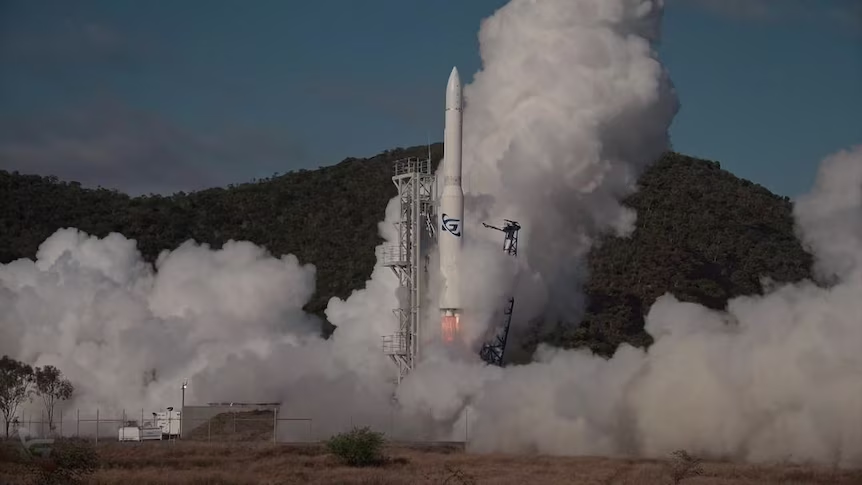In a landmark moment for Australian aerospace, Gilmour Space Technologies successfully conducted the country’s first-ever homegrown orbital rocket launch attempt on July 29, 2025, from the Bowen Orbital Spaceport in coastal Queensland, within the Mackay & Whitsundays region. Though the mission didn’t go as planned, it marked a giant leap forward for Australia’s emerging space and technology sector.
A Historic Attempt, A Short Flight
The Eris rocket, designed and built by Gilmour Space, lifted off at approximately 6:35 p.m. EDT (8:35 a.m. AEST), reaching a flight duration of around 14 seconds before a technical anomaly caused the vehicle to veer sideways and crash back to Earth. The launch marked the first orbital rocket built and launched entirely in Australia.
Despite the premature ending, the mission provided invaluable data, a crucial step in validating the rocket’s propulsion, payload fairing, and launch systems.
Not a Failure, But a Learning Launch
“This was the first real test of our rocket systems, our propulsion technology, and our spaceport,” said Gilmour Space CEO Adam Gilmour in an official statement. “It proved that much of what we’ve built works.”
The company had not expected complete success on its debut. In a previous statement, it had noted:
“Whether we make it off the pad, reach max Q, or get all the way to space, what’s important is that every second of flight will deliver valuable data that will improve our rocket’s reliability and performance for future launches.”
A Long Road to Liftoff
The Eris rocket’s journey to the launchpad was delayed multiple times by natural and technical hurdles. Initial plans for a March launch were disrupted by Tropical Cyclone Alfred. Later, on May 15, a payload fairing issue,caused by an unexpected electrical power surge postponed the launch once more. Weather conditions also played a role in pushing the launch date further into July.
Still, the team at Gilmour Space, based in Australia’s Gold Coast, remained committed to their mission. With a workforce of around 200 and growing, the company has also launched its first ElaraSat satellite bus aboard SpaceX’s Transporter-14 mission in June, carrying an instrument from CSIRO to monitor water quality.
A Revival of Australia’s Orbital Capabilities
This launch is the first orbital launch attempt from Australian soil in more than 50 years. The last was in 1971, when a British Black Arrow rocket launched the Prospero satellite from Woomera Rocket Range in South Australia.
At 25 meters tall and capable of delivering 215 kilograms of payload to sun-synchronous orbit, the Eris rocket is designed to serve small satellite customers in both civil and commercial sectors. Its maiden flight may have been brief, but it signaled Australia’s entry into the global space launch arena.
What’s Next?
Despite the setback, Gilmour Space is already focused on its next mission.Test Flight 2. Getting off the pad and into flight is a huge step forward for any new rocket program,Adam Gilmour said. The company emphasized that no injuries or environmental damage occurred during the incident.
This test flight is more than a technological feat; it’s a statement that Australia is ready to become a serious player in the space and technology sector. As the global demand for launch services increases, companies like Gilmour Space are positioning Australia as a future hub for spaceport operations, innovation, and scientific progress.












More Stories
‘They Don’t Need Our Help’: US Secretary of State Marco Rubio Praises India’s ‘Professionalism’ in Delhi Blast Probe
Newly Built Hongqi Bridge in China Collapses After Landslide: Dramatic Video Captures the Moment
iQOO 15 Launching November 26: Snapdragon 8 Elite Gen 5, 7-Year Update Promise & Everything You Need to Know